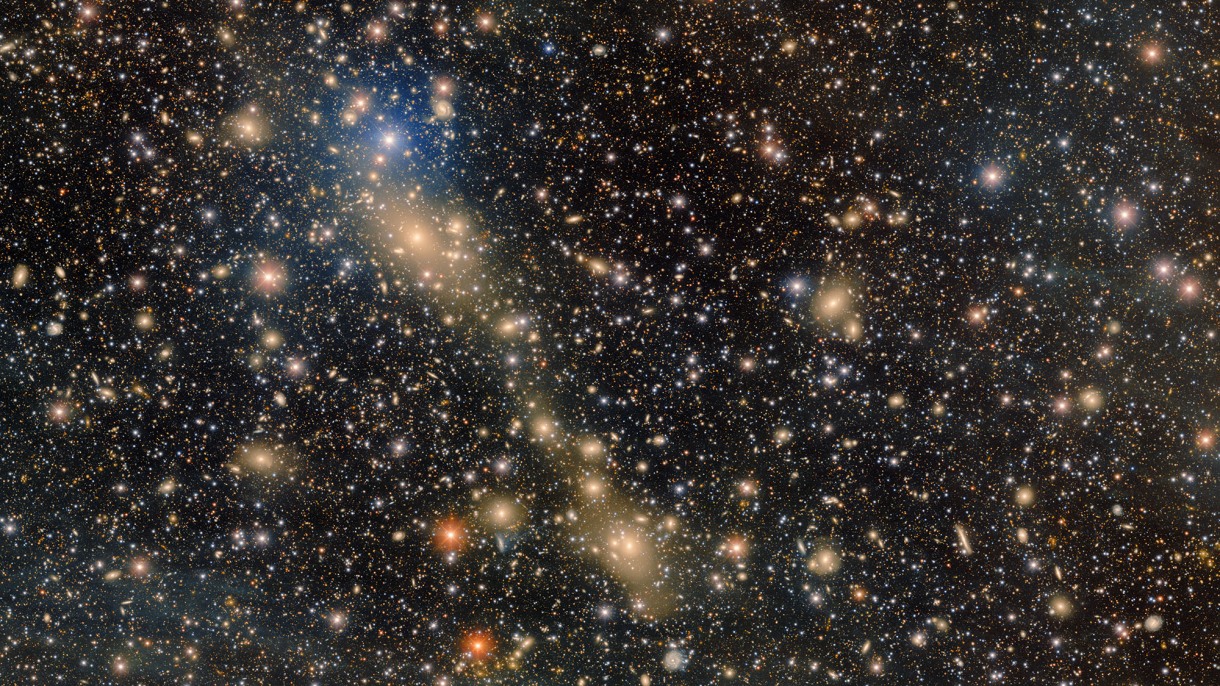The ICL imaged by Englert and his colleagues revealed a special type of galactic merger happening in Abell 3667. Normally, Englert says, mergers that involve the largest galaxy in a cluster, called the brightest cluster galaxy or BCG, occur gradually as it steals stars from many smaller galaxies that surround it. But this new research shows something different happening in this case. Abell 3667 is actually made of two galaxy clusters, each with its own BCG, that are now merging together. The ICL bridge discovered by the researchers suggests that the larger BCG is stealing stars from the smaller one — an event known as a rapid or aggressive merger. As the two BCGs merge, so too do the smaller galaxies that surround them, making Abell 3667 the product of two merging clusters. Data from X-ray and radio frequency observations had suggested a rapid merger in Abell 3667, but this is the first optical evidence to back it up.
The appearance of intracluster light in these new images offers a tantalizing preview of what’s to come when the Vera C. Rubin Observatory becomes fully operational later this year or early next. Using a telescope twice the size of Blanco and the largest camera ever built, the Rubin telescope will perform a 10-year scan deep into the entire southern sky, a project called the Legacy Survey of Space and Time.
“Rubin is going to be able to image ICL in much the same way as we did here, but it’s going to do it for every single local galaxy cluster in the southern sky,” Englert said. “What we did is just a small sliver of what Rubin is going to be able to do. It’s really going to blow the study of the ICL wide open.”
That will be a scientific bonanza for astronomers and astrophysicists. In addition to revealing the history of galaxy clusters, the ICL holds clues to some of the most fundamental mysteries of the universe, particularly dark matter — the mysterious, invisible stuff thought to account for most of the universe’s mass.
“ICL is quite important for cosmology,” Dell’Antonio said. “The distribution of this light should mirror the distribution of dark matter, so it provides an indirect way to ‘see’ the dark matter.”
Seeing the unseeable — that’s a powerful telescope.
The Victor M. Blanco Telescope and the Vera C. Rubin Observatory are operated by NOIRLab, the U.S. national center for ground-based, nighttime optical astronomy operated by the National Science Foundation. The research was funded by NSF (AST-2108287), the U.S. Department of Energy (DE-SC-0010010) and the NASA Rhode Island Space Grant Consortium.
